
These mountains got their start one billion years ago in a slam of tectonic plates pushing as high as the Rockies then wearing down these last 250 million years to become sand on ocean beaches. It’s easy to forget how massive and formidable a barrier the Appalachian Mountains presented to 18th century settlers who pushed west with or without the apparent acquiescence of Native Americans. From northern Newfoundland all the way to Alabama, they were the definition of “frontier” and retain some of that feeling, though more recently acquiring some cachet and kindling some pride in those of us who grew up among them.
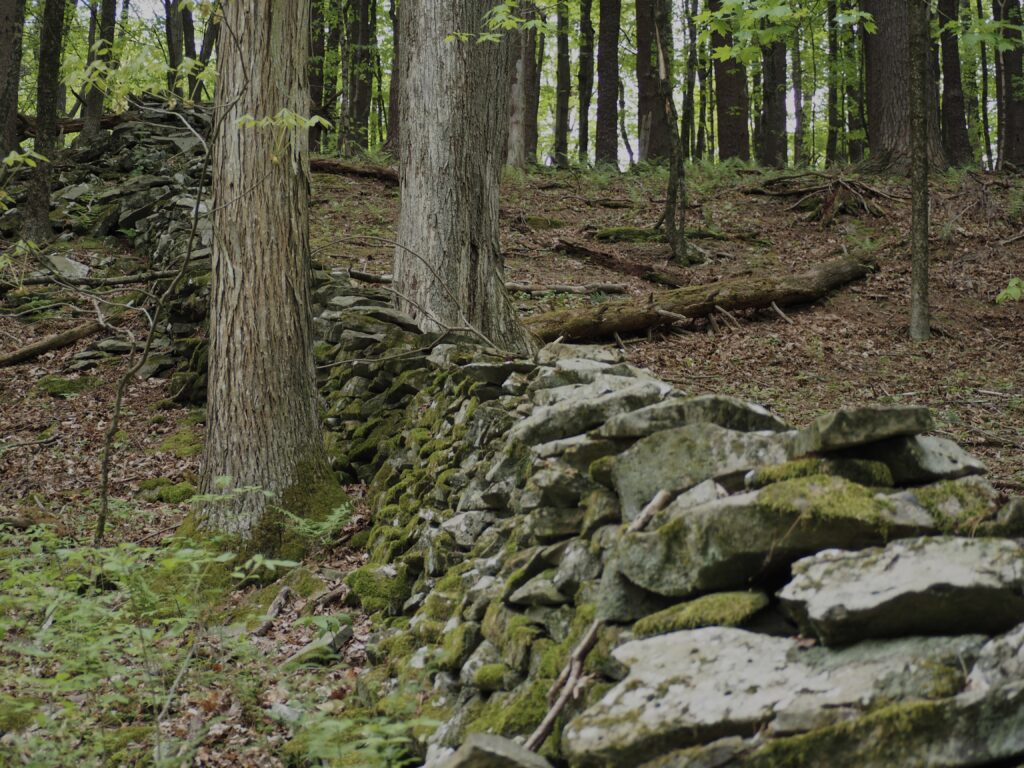
We began our journey by heading west from Cape Cod through Massachusetts and New York where we stopped for a hike (a primary purpose of our trip) and stumbled on a number of those stone walls you find everywhere in mountainous New England that cleared the fields and demarcated the clear cut land, primarily for sheep.





We stopped on our way south at Winchester VA to see the Museum of the Shenandoah Mountains with its beautiful gardens and a surprising collection of very large doll houses (with little ladders to help you view them) put together by one of the men who created and lived on the estate.

And then Roanoke VA to visit the O. Winston Link Museum featuring his photographs of . . . steam engines and trains. (Please forgive the photo of a photo.) Link was a master of lighting and composition at the very end of the steam age. We could also indulge Jim’s fascination with the link to his grandfather who sat in one of those towers along the tracks and used telegraphy to communicate the whereabouts of trains.
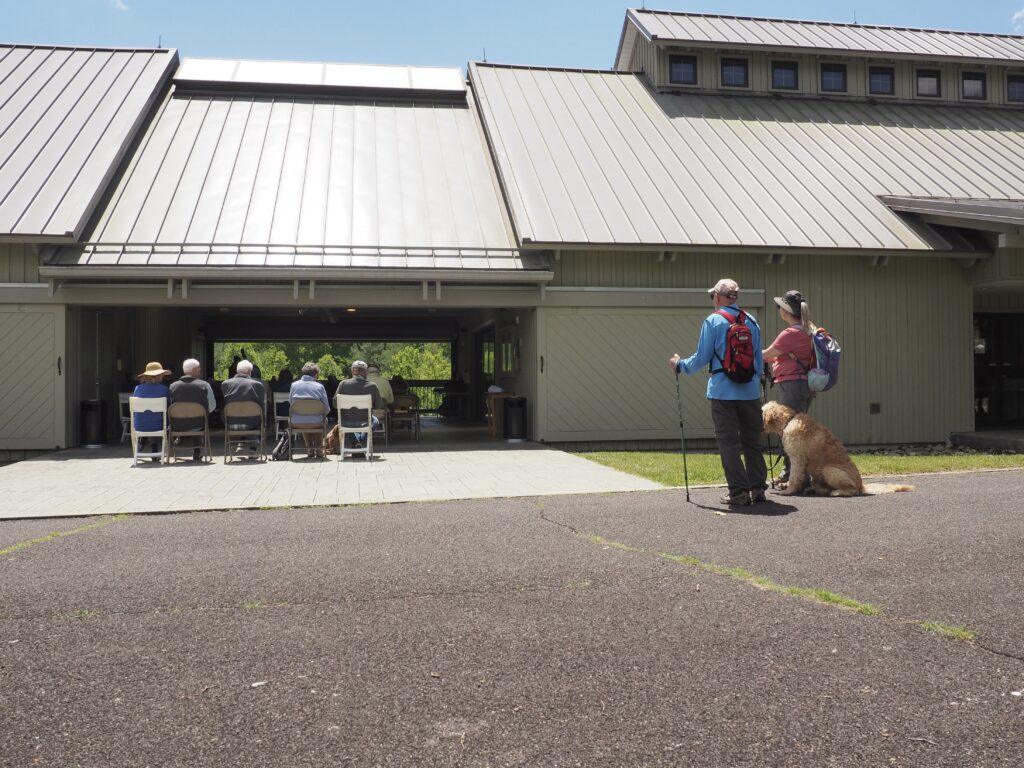


Making our way down to southern Virginia, we stopped by the Blue Ridge Music Center in Galax, where there are midday informal concerts and demonstrations of either old time music or bluegrass (being fancier concert music, rather than for dancing). The Fisher Peak Timber Rattlers played old time music and the fiddler just grew up learning to hold the fiddle that way. Inside is a museum of American music and instruments.








Outside, the Park Service maintains some beautiful trails and a large amphitheater where you can catch big name bluegrass and country performers.












The Blue Ridge Parkway – linking Shenandoah National Park in Virginia with the Great Smoky Mountains National Park- really is a remarkable road weaving through the mountains at a comparatively leisurely 45 mph (if that) and benefiting from the careful attention of teams of landscape architects who laid a route maximizing the wow factor of what was already there, augmented by plantings heavy on rhododendrons that have been naturalizing since 1935. There are also abundant well marked hiking trails and lonely ranger outposts along the way to make sure you get a workout or the help you need, if you want.









The family of Moses Cone (whose business at one time was the world’s largest manufacturer of denim) donated his 3800 acre mountain retreat and mansion with 25 miles of carriage roads to the Park Service in 1950. Spoiler alert: the rather-grand-for-the-mountains house is only the second largest in these parts. Too bad we forgot to bring our horses.











All along the Parkway there are hikes to waterfalls and, during our travels, fog and rain, and lots of fog.






Or, simply steep hikes to a fogged in view.

Or, sitting in the car fogged in views.

Then there was Biltmore. The Mansion. The Estate. Outside of present day Asheville, NC (nice city with a very active and creative art scene).

Where the Vanderbilts owned those mountains, too.









The Gardens.












The House. Totally, literally, crazy. Beautiful, gorgeous, all those words (of course), but completely crazy and a compelling indictment of wealth. That swimming pool was built before the modern era of chlorine and filtering systems and, so, was drained and scrubbed down after every use. We might admire the Family for opening up the house and grounds for (quite expensive) tours, but the sheer existence of the place is, again, simply crazy – all the more so because the builder, the founder, of Biltmore was not the man who created the wealth (Cornelius), but his grandson George whose sole occupation was spending it. Still, clearly worth a visit.

These are the Smoky Mountains and this The Great Smoky Mountains National Park, not far from Asheville and at the southernmost end of the Blue Ridge Parkway where it leaves you by the town of Cherokee and the Qualla Reservation of the Cherokee Nation.










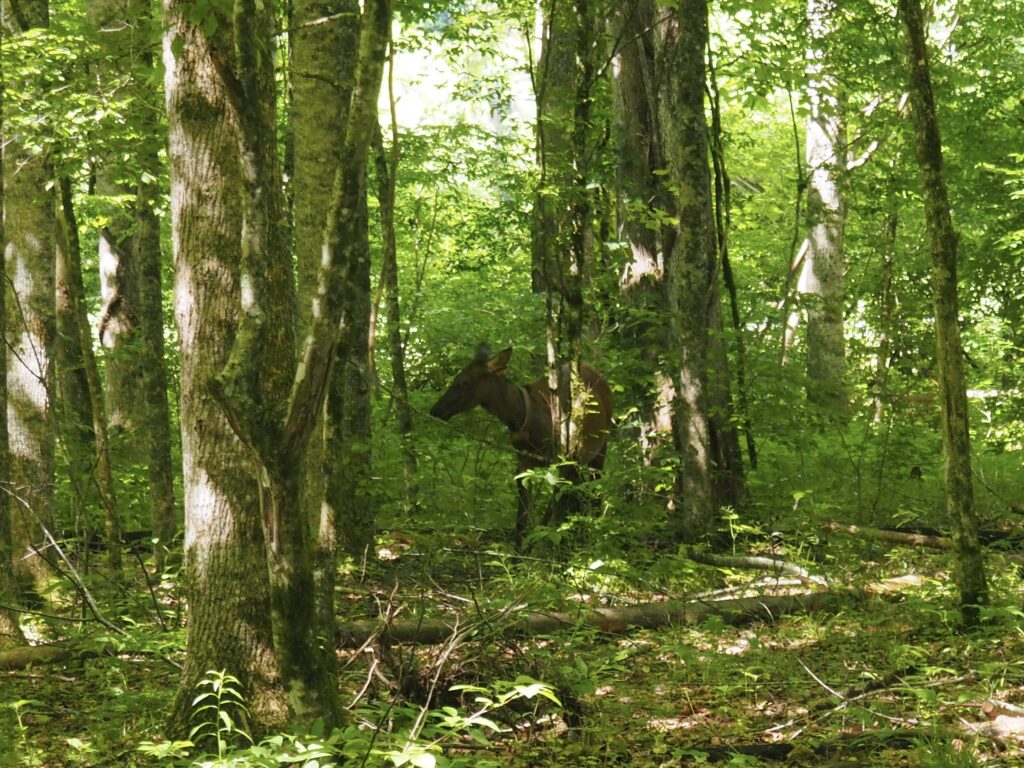
Elk had become extinct in the East. The Park Service transferred elk from Yellowstone and, as you’ll notice in the photo above, outfit every elk in the park with a GPS monitoring collar to keep track of how they’re doing.






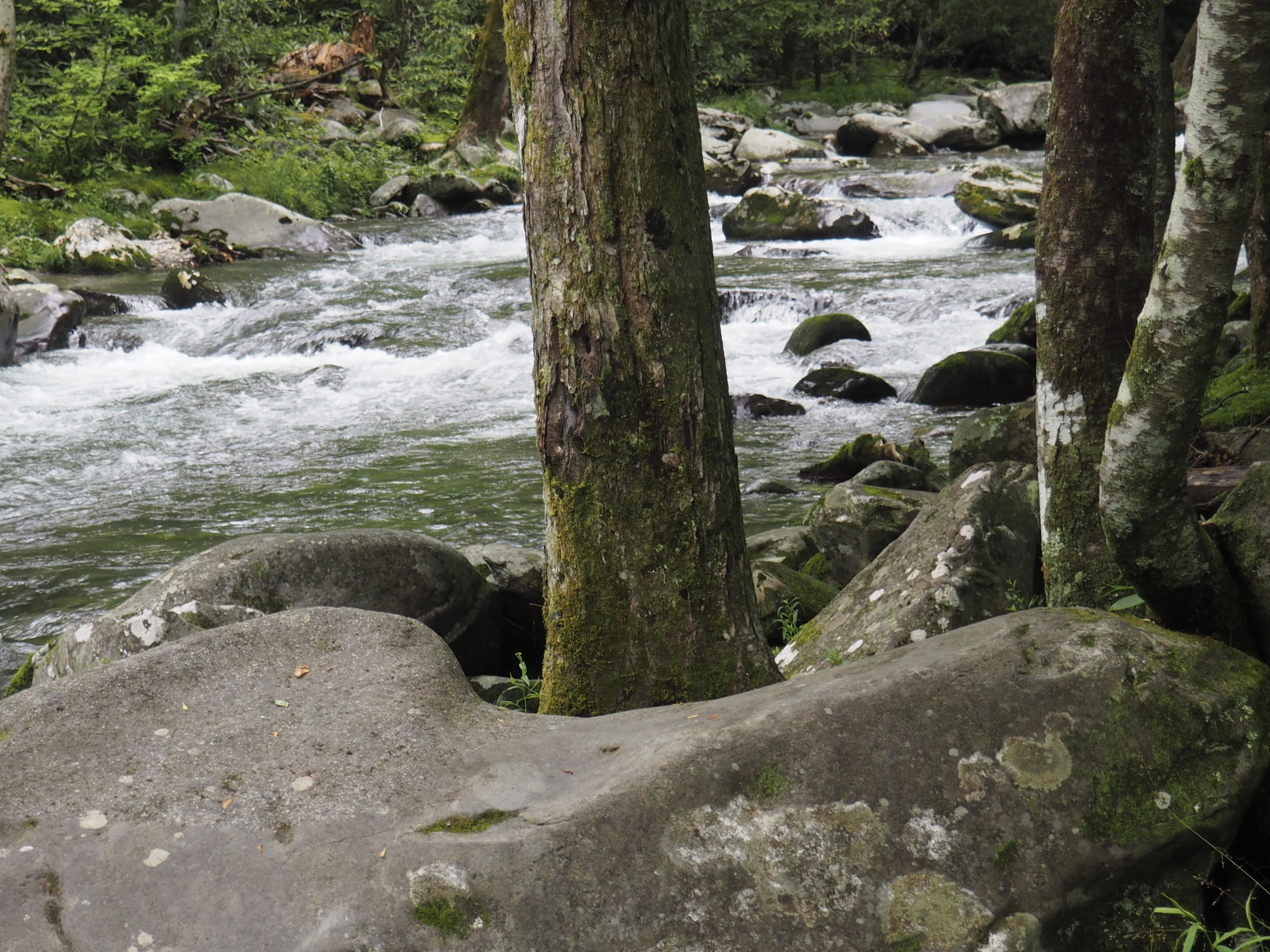






We’d never seen such an abundance of waterfalls.





Up a small road deep in the park is a settlement of summer homes built by people from Knoxville who brought along their help (see lower right). The Park Service intended to tear them down, but were foiled by someone filing for historical protection. So, they will stand preserved with volunteers telling the story of children left to play in the streams and summers at ease.








We stayed on both sides of the park, in Cherokee in NC and in Townsend in Tennessee (wisely avoiding Gatlinburg and Pigeon Forge). We chose Townsend to be as close as we could get to Cades Cove, the go to place for spotting black bears. There’s a one-way narrow single lane loop road circling the cove after a considerable drive in with a stream of cars patiently scanning the fields and woods for deer, elk and bears. A cluster of cars parked haphazardly on the side means someone has seen something and people get out and share a scope or a look through a telephoto lens. And then you might get lucky, as we did, with our strategy of heading over there after dinner and in early morning.

Also, there were crows. But, we felt fortunate to be in the park when we were – in May – not wanting to imagine how crowded it must be in the peak of the season when we passed popular trailheads overflowing with cars parked up and down the road after the parking areas quickly filled if you hadn’t arrived in early morning.






Taking advantage of our latitude, we headed further south to visit an arts and crafts school in Brasstown (in other words, the middle of nowhere) that dates way back and has a curriculum for visiting adults that ranges from banjo picking to blacksmithing. It was fun and the quality of work was impressive. We later figured out that there are schools like this all over the country, with a lot of them in New England.

Trees
BY JOYCE KILMER
I think that I shall never see
A poem lovely as a tree.
A tree whose hungry mouth is prest
Against the earth’s sweet flowing breast;
A tree that looks at God all day,
And lifts her leafy arms to pray;
A tree that may in Summer wear
A nest of robins in her hair;
Upon whose bosom snow has lain;
Who intimately lives with rain.
Poems are made by fools like me,
But only God can make a tree.
[Joyce Kilmer, “Trees” from Poetry 2, no. 5 (August 1915): 153.]





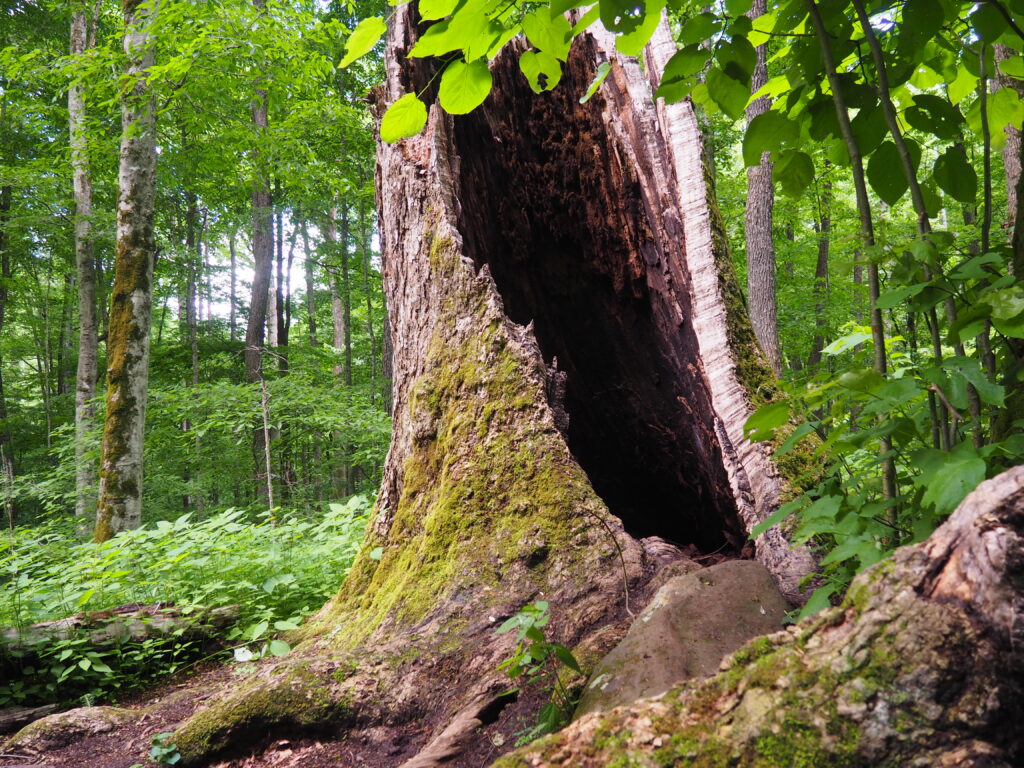

Heading even further south near to the Georgia border we managed to find the very remote Joyce Kilmer Memorial Forest (named for the soldier/author of Trees and one of those poets killed in action in the trenches of WWI), one of the very few surviving old growth forests in America. We had begun to doubt Google Maps (having been led to take some highly questionable routes), but the Forest Service website advised they were the only ones to trust. The two ladies on a smoke break who confirmed directions for us wary travelers assured us we were welcome even with our northern license plate and hoped we’d stay a while.
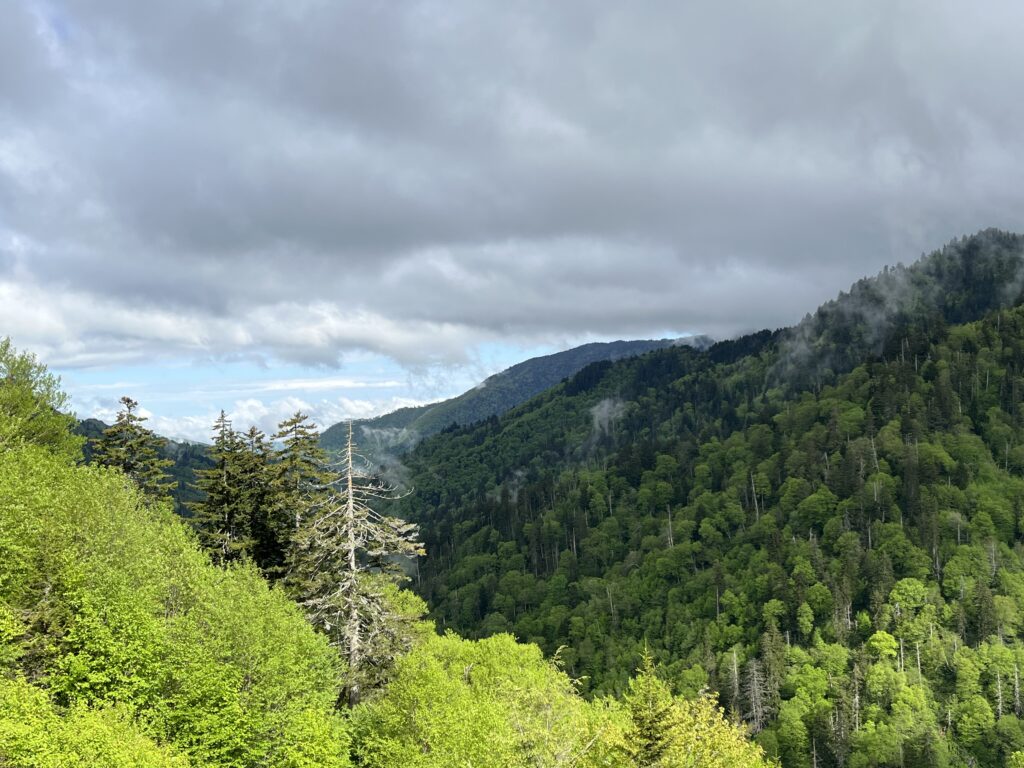
After visiting friends in Greenville SC and family around Harrisburg (where we stocked up on birch beer), we continued our return north and east.









As our final stop before home on Cape Cod, we stopped in New Paltz, NY to take a look at a 17th century Huguenot village in honor of Amanda’s Huguenot heritage and the Hudson River from the vantage point of an old railroad bridge repurposed as an actually very nice walking and biking trail the width of the river (and well beyond).

